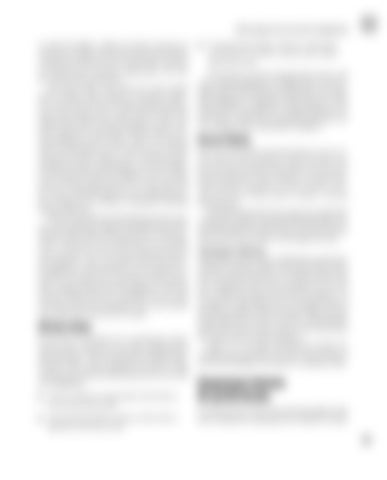Alternating Current and AC Equipment to make the higher voltage, but these systems are used only on larger yachts, and a discussion of them would go beyond the scope of this book. I’ll focus on only the most common, single-phase 120-volt, 20- and 30-amp systems here. The three colors used with AC in the United States are black, white, and green. The black conductor is used only for the AC ungrounded (positive) lead. Some people refer to this as the hot lead. This explains the trend toward using yellow as a DC negative conductor in accordance with the ABYC’s recommendations for DC systems. There is an obvious risk of confusing the hot AC positive wire with the relatively inert DC negative wire, which has traditionally been black. Increasingly, new-boat builders are moving to the yellow DC negative wire as a means of more clearly separating the AC service from the DC service. Manufacturers are now making the yellow insulated wire available in all gauges including battery-cable sizes. With AC, the white lead should always be the negative, grounded lead, and green should be the grounding lead, which offers shock protection to the boatowner. This green wire, which does not normally carry current, is one of the most important keys to preventing the “zap” you could receive from electrical appliances on board if they are not properly connected or if a fault occurs anywhere in the system. This, coupled with the fact that appliances will work just fine whether this wire is attached or not, is why ensuring continuity throughout the circuit all the way to the shore-power box is crucial.
ISO Color Coding If your boat is not built to U.S. specifications, there may be some variations in the color-coding scheme described above. The International Standards Organization (ISO), whose standards are used in many countries, prescribes the following colors for use with AC installations:
For hot conductors (ungrounded), either black or brown wires must be used.
For neutral (grounded) conductors, either white or light blue wires must be used.
For ground (grounding) conductors, either green (as with the U.S. system) or green with a yellow stripe may be used.
If your boat is wired using the ISO system and you’re making additions or modifications, it’s an excellent idea to stick with the existing color code rather than changing or mixing the codes. However, in the United States you might have trouble finding wire in ISO colors, in which case you should improvise your own coding system as described in chapter 2.
Reverse Polarity Reversal of the black and white leads on an AC circuit creates reverse polarity, where the white wire becomes the hot lead and the black wire becomes the grounded lead. This condition can destroy polarity-sensitive equipment, such as motors, TVs, and microwave ovens, and it creates a serious shock hazard. The bottom line here? You need to be certain that wiring color coding is matched and appropriately connected through every inch of the AC circuit, from the shore-power source all the way through your boat.
Testing for Polarity Many newer boats with AC distribution panels have a polarity-test button right on the panel. If you don’t have one of these panels, you can check polarity with your multimeter every time you plug in, or you can buy a simple and cheap circuit tester (see figure 11-9 on page 167) that plugs into any standard outlet. If the indicator lights on the tester don’t light up in the proper sequence, you know you have reverse polarity somewhere in the circuit, and you must shut down the circuit until you find it and fix it. Figure 11-1 on page 160 illustrates typical AC wiring connections from the shore-power inlet on your boat through the AC panel to a standard outlet.
Comparisons between AC and DC Circuits As with the DC circuits discussed throughout this book, things like amperage and voltage are major 159


































